Queens Name Explorer
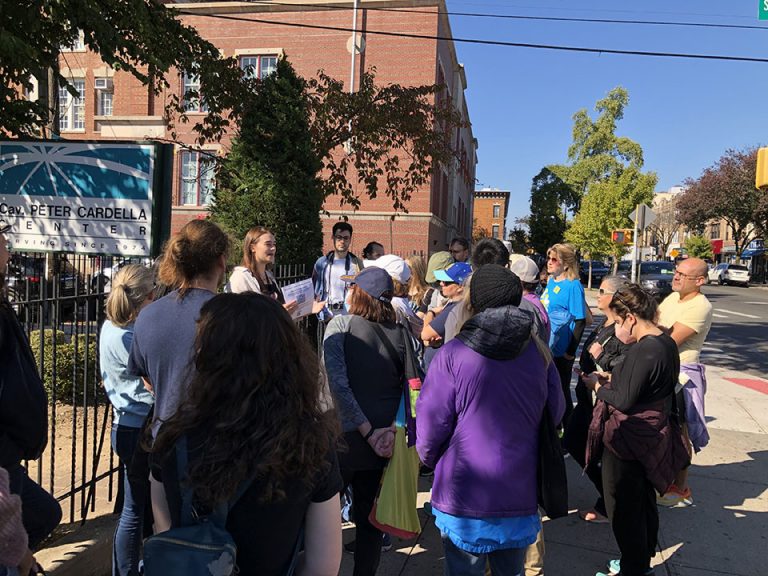
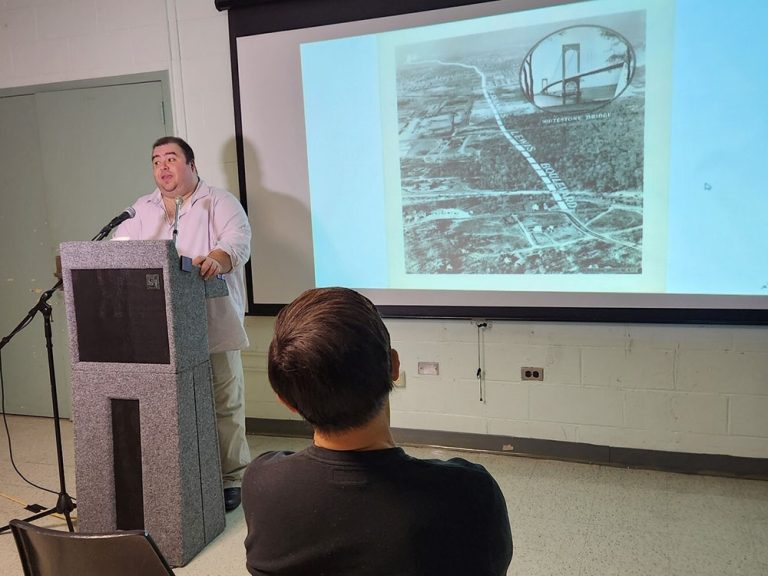
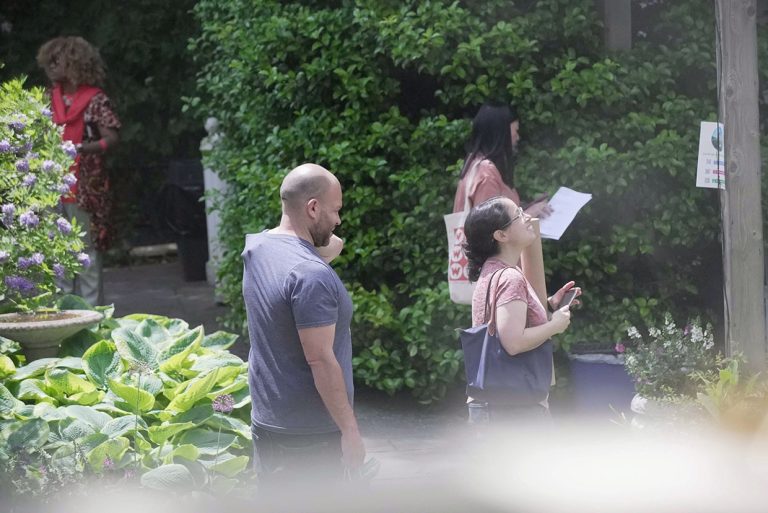
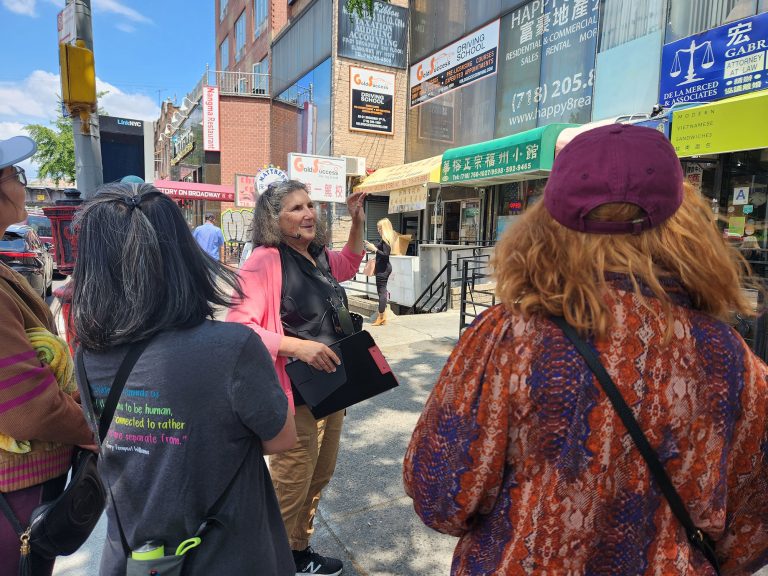
In 2022, the Queens Memory team partnered once again with technology partner Urban Archive to do a new public history project, this time with funding from the Mellon Foundation. We wanted to delve into the national debate over monuments in a locally relevant way.
New York City lacks a centralized inventory of public places named after people. In our research, we encountered Individual researchers who had authored books and other publications about place names, most notably Gilbert Tauber, who created the website oldstreets.com and populated it with his own research from public sources. Mr. Tauber generously shared all of his research with us to use in the project. We also encountered historical societies and community boards with records and deep local knowledge about the people honored with namings in their areas. But we discovered that ours would be the first aggregated and mapped dataset of every public place named after individuals.
We also discovered that around half of all named places we identified are co-named streets, most of which have been named for people who lived in the past 100 years. These are important and beloved local figures, but not necessarily people who would be recognized or documented at a national level. That’s why we built a submission form on the project website and implemented call-to-action strategies to capture a record of what people who knew these honored folks best remember about them. This local knowledge, this record of lived experience, is at the heart of Queens Memory’s mission, and also the most endangered of the knowledge that exists about these honored individuals.
We are also curious to see how demographically representative honorary place names are to current populations. Our team determined that (1) Place of birth (2) Languages spoken and (3) Gender are the three data points that we will be able to gather for both local populations and individuals honored with local namings. As research on the biographical details of these 1000+ individuals continues, we get closer to being able to share analysis with the public about how similar they are to the people living in the areas where they have been honored.
This project is borough-wide, covering the entirety of Queens county in New York City.
Queens is the most diverse county in the United States and if it were its own city, it would be the fourth largest in the United States, with a population of 2.4 million. It covers 108 square miles and contains over 1000 public places named after individuals.
The audience for this project is anyone who lives in Queens and wonders about the person their street, school, or local park is named after. It is also a repository of photographs and memories shared by individuals who knew those honored people during their lifetimes.
The Queens Name Explorer website (https://nameexplorer.urbanarchive.org/) launched in October 2022. To create awareness about the project, QPL conducted public outreach via social media, printed postcards, and the press. QPL published 168 social media posts on Instagram, Twitter and Facebook and engaged over 70 neighborhood and local interest groups on Facebook. The team also conducted outreach to all Queens community boards and City Council members. Additionally, the team conducted outreach to public schools in Queens named after lesser-known individuals.
The team developed public programming with guest speakers, including author talks with Joshua Jelly-Schapiro, Jason Antos, and Rebecca Bratspies. The team led six in-person walking tours in Elmhurst, Jamaica, Forest Hills, Long Island City and Ridgewood and 1 virtual tour of the Queens College campus. In addition, the team collaborated with graduate-level Public History (Queens College, CUNY) and Public Journalism (Newmark School of Journalism, CUNY) courses whose professors made the Queens Name Explorer the centerpiece of semester-long projects.
As of March 2023, 20 individuals have uploaded substantive contributions through the project’s “Add/Edit” form including historic and personal photos and stories about individuals with entries on the site. Our lead Project Archivist, Lori Wallach, corresponded with contributors and helped them to share additional media and metadata. We hope these contributions will increase over the coming months as we do more outreach and engagement work.
Research, writing, public programs, design, outreach.
Angela Miskis served as the project’s Data Specialist. Most of her research used NYC Open Data, which is official data gathered and maintained by NYC City Agencies. She searched their website https://opendata.cityofnewyork.us/ for key terms relevant to the project, such as street names, named places, parks, and schools. This search yielded 16 data sets, but only nine produced viable named place records. She also used the New York State Department of Education (NYSDE) website to identify private institutions in Queens that NYC city agencies do not track. The facilities she found currently receive funding from the NYSDE for various purposes like summer programs, special needs services, or faith-based schools. The NYSDE uses COGNOS to create public-facing reports anyone can filter by county and download. The data is updated every night as per their website.
Miskis processed over 60 loose Word and Excel files shared by Gil Tauber. These files were historical data from City Council committee reports or mayoral press releases going back to 1922 up to the present. Once she combined all Word and Excel files, she ended up with 14K citywide records; 3K (22%) were relevant to the Borough of Queens, and out of the Queens records, 674 (22%) were unique street names.
All data sets from NYC Open Data and Honorary Street Names had different formats, so she could not use one blanket approach to process all datasets at once. She used a mix of advanced Excel formulas and tools (power query and macros) to gather and prepare the bulk of the Queens Data and then manually refined and cleaned the data before distribution. She checked each data set for the following information and provided this information to Queens Memory when available: Place name, Location, Geolocation, Neighborhood, Borough, City Council district, Zip code, and Community Board.
On average, about 70% of all records in production have at least one piece of key geographical information. Below is a detailed breakdown of the key information Miskis obtained from the different data sources.
| Key Geographical Information | % From all records |
|---|---|
| Location | 87% |
| City Council district | 76% |
| Community Board | 74% |
| Geolocation | 75% |
| Neighborhood | 60% |
| Zip code | 45% |
With the help of QPL’s Institutional Assessment team, we determined how to parse census data at the Community Board and City Council level and found a way to visually display the boundaries for both on the Urban Archive platform. In the future, this will supply the framework for data visualizations of demographic analysis of named places and their communities.
The research team determined a style for the name place entries and what information would be included in each entry. They worked with Urban Archive to find a way to cite sources at the bottom of entries and weight the primary entries created by our team to appear on top of subsequent entries created with additional stories and photos shared by local residents. We also determined thresholds for when to add crowd-sourced content to main entries and when to create new entries. The team conducted archival and online research for facts and images we could use in the entries.
Thanks to our partners at Wikidata NYC and BetaNYC, whom we granted editorial access to the AirTable instance we use for the Name Explorer dataset, we now have wikidata URLs in every entry where they exist. Wikidata NYC is creating new wikidata entries for those individuals who did not already have them. Data from our dataset has also been added to OpenStreetMap. Thanks to researchers on the Name Explorer team as well as contributors affiliated with these public data projects, we now have a reciprocal flow of information that will add more local knowledge to international platforms and eliminate a redundancy of research effort on our part when public data exists about a better-known individual in our local project.
The social media team did an excellent job of testing the style, frequency, and distribution of our posts and then circling back to see what was effective. For example, during February we adjusted our social media content to try and better engage viewers. Two primary changes were made; we included an additional image of the named location or neighborhood in which it is located and we reached out to related organizations and accounts to request their share our post to their own social channels (i.e. sharing on their Instagram story). The purpose of the first change was to better entice those who already follow the Urban Archive account who have come to expect architectural images rather than portraits from the account. The second action was done to try and reach not only a larger audience but new people who might be interested in that specific post, but wouldn’t otherwise have had our account recommended to them (i.e. a jazz fan would be interested in our post about a musician but the algorithm might not otherwise recommend our post to them since the Urban Archive account is more accosted with architectural history and targets the ‘history buff’ audience).
The results are as follows: In January, Urban Archive cross posted with Queens Memory 5 times with an average of 186 likes and 4,666 accounts reached per post. In February those numbers rose to 385 likes and 6,408 accounts reached. Moreover, while only 1 post in January garnered over 200 likes, all 4 in February did. We believe that our strategy of reaching out to other accounts directly impacted the amount of accounts our content reached while the addition of location-based images better enticed those already following the Urban Archive account. The numbers speak for themselves and show that clearly these experiments have succeeded in better engaging viewers with our Name Explorer posts.
Due to the unexpectedly high number of named places and the relative sparsity of data about them, demographic analysis, visualizations and outreach campaigns based on that analysis were not possible as planned during the first year of development. As a result, public programming and social media outreach have focused on highlighting individuals with compelling stories instead of a focus on silences and gaps within the body of named places as originally conceived in our proposal. The result has been a celebration of the representation that does exist between named places and local communities. The team created curated groups of entries for Black History Month and Women’s History Month in 2023 that filtered notable women and people of color to the top of the discovery pane on the project’s webpage.
The project garnered helpful press coverage:
- 1010WINS – Queens Name Explorer
- NY 1 – New Project Spotlights Little known Names
- QNS.com – Queens Public Library launches new project to archive history of local heroes across the borough
- Queens Chronicle – Oh, the places named for people!
- Latinos in New York – ‘Queens Name Explorer’ Creates Map of People’s Names
- China Press – Queens Public Library Launches Queens Name Explorer Project
- CBS – Queens Name Explorer sheds light on local figures
- Queens Public Library – QPL’s “Queens Name Explorer” Project Seeks to Assemble Archive of the Borough’s Streets, Buildings, Parks, and Monuments Named After Individuals
- Queens Ledger – Queens Name Explorer project honors notables
- QNS – Queens Public Library hosts conversation with Astoria author on borough history
- Patch – CUNY Students Seek Voices In Queens To Document Oral History
The biggest unknown going into this project was the extent and availability of name place data. We did not know exactly where our Data Specialist would source the data we needed, or how complete it would be when she found it. Some entries were extremely minimal, with just a place name and unformatted location; this was the case with the NYC Parks Monuments dataset and the Street Name Dictionary dataset from the Department of City Planning just had street names without location information.
We made a decision to prioritize getting the largest possible number of name place entries live on the site to open opportunities for public engagement. Urban Archive set up a refresh protocol that updates all published entries each hour. This allowed us to publish minimal entries quickly and later go back to refine them. In order to publish quickly, we determined a minimal set of metadata required for each public entry. The team gathers a minimum of five core elements of vetted data for each entry before we publish it to the public map: (1) site name, (2) street address, (3) georeference (latitude and longitude coordinates), (4) what type of place it is (street, park, etc.), and (5) the full name of the person for which the site was named.
Our team put in many hours of labor, and engaged many more hours of labor from volunteers and students, to get all of these entries live on the site. Our original project plan involved starting public outreach activities in the fall of 2022 that we were only able to really pursue in early 2023 because we didn’t want to drive lots of traffic to the site until we reached a larger percentage of our entries being live on the site.
This project has brought remarkable individuals to our team’s attention who we could hardly believe we had never heard of previously. This includes individuals like James Pennington who lived from 1807 to 1870. He was an African American orator, minister, writer and abolitionist who served a congregation at what is now 90th Street and Corona Avenue in Queens, in the mid-19th century.
Born into slavery in Maryland, Pennington became an expert blacksmith and carpenter and taught himself to read, write and do math. In 1827 at age 19 he escaped via the Underground Railroad to Pennsylvania. In 1830 he traveled to Long Island, where he worked as a coachman and studied, teaching himself Greek and Latin, and devoted himself to Black education and antislavery.
Individuals like this are now highlighted in walking tours we conduct for the public and in social media posts we create.
The project has also opened up a new outreach channel to community members interested in local history. We are primarily an oral history program and we have developed a good set of talking points and resource materials for community members who wish to conduct an interview or be interviewed themselves. But the Name Explorer project offers a much lower barrier to entry for new participants. Unlike explaining the purpose and merits of Oral History and then overwhelming a newcomer with the numerous (and laborious) steps and forms involved with creating an oral history, Name Explorer offers an opportunity to make an easy contribution. We have encountered many individuals serving in community boards, civic associations and in elected office who immediately “get” what we are trying to do and often have first hand experience with honorary street co-naming nominations as well as personal memories of those honored. The accessibility of the concept has also helped to attract press coverage. One local reporter told us she didn’t need to go out for B-roll for her story about Name Explorer because she had been covering honorary street naming ceremonies for years! What seems remarkable is that a combined list of named places did not exist before this project.
The project team includes QPL staff from the Metadata Services, Marketing, Communications, Government Affairs, and Institutional Assessment departments. The team worked with Urban Archives, grant-supported project staff, volunteers and interns to establish an asynchronous and distributed team workflow for research, editorial, visual and functional design, publication, outreach and preservation processes.
Activity Timeline
Onboarding of project staff including Project Archivist, Lori Wallach, the Outreach Specialist, Debra Marrone, and Data Specialist Angela Miskis.
Urban Archive’s team designed and built out the project page on the Urban Archive’s platform, complete with public submission forms.
The Data Specialist assembled a dataset of individuals whose personal names have been used to name public places in Queens including parks, streets, schools and other public spaces.
The Archivist began biographical and demographic research on individuals for whom public places have been named in Queens including parks, streets, schools, etc.
Rolling onboarding begins for research interns and volunteers. Push to publish as many entries as possible before public launch.
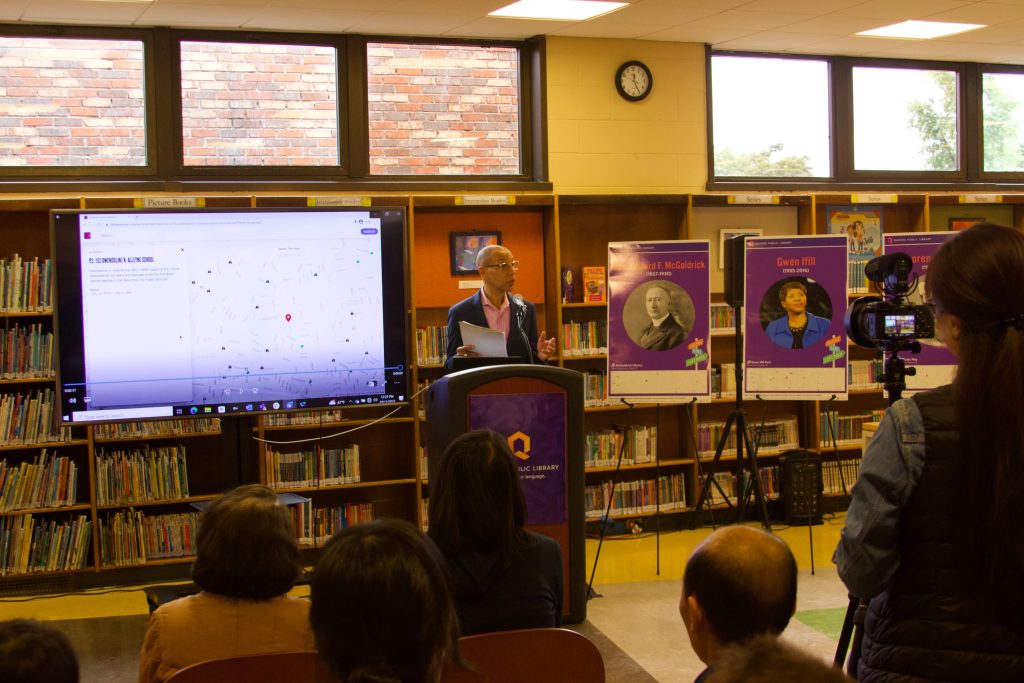
Public launch of project website (queenslib.org/explore) and press event at the McGoldrick Library in Flushing, Queens.
Public programming launch to share information about individuals honored by place names. These programs took the form of in-person and virtual neighborhood walking tours and author talks by Joshua Jelly-Schapiro, Jason Antos, and Rebecca Bratspies.
Close of Mellon grant, final reporting and strategic plans for Year 2.
©2019 Queens Public Library. All Rights Reserved. All logos and trademarks are property of their respective owners. All image and media rights are owned by Queens Public Library unless otherwise indicated. Please consult respective notices for usage rights and permissions.

